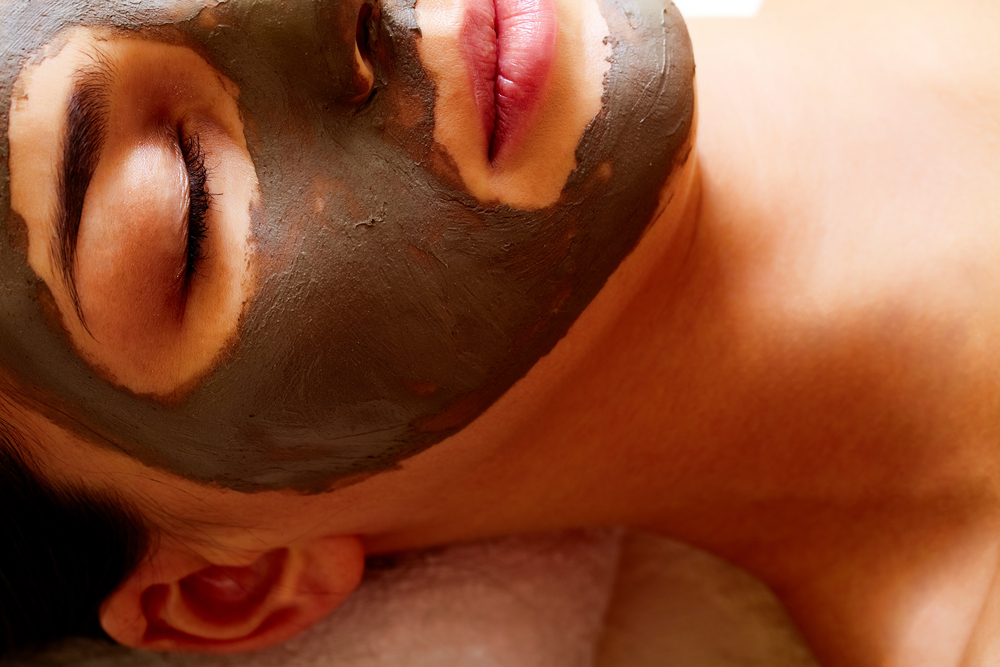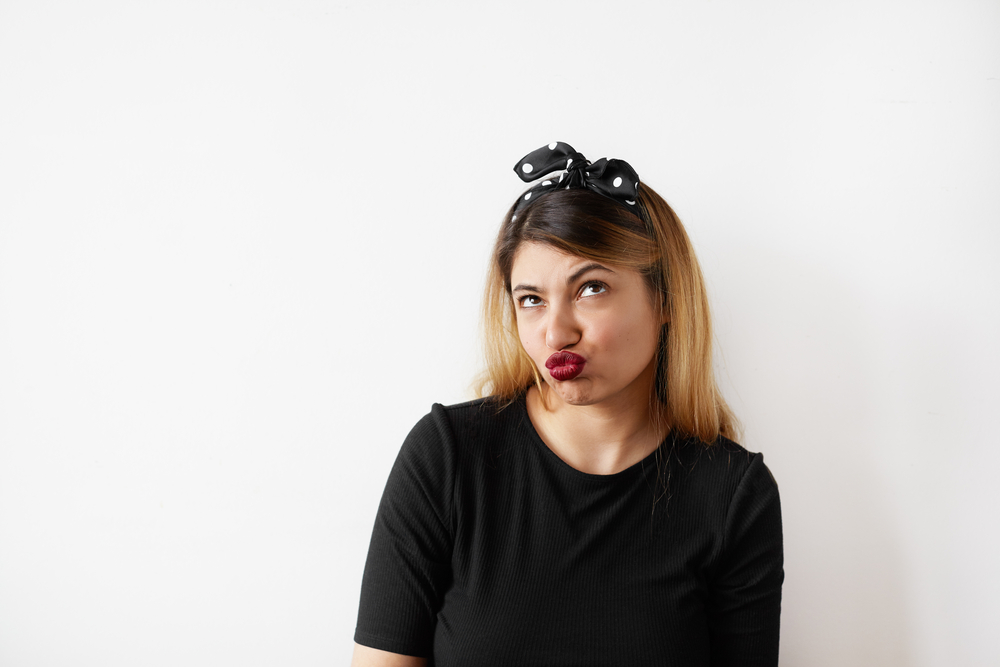From vampire facials to eyebrow transplants, we go to some bizarre lengths for beauty.
Unique facial masks seem to be chief among these strange new trends, with people willing to slather just about anything on their face if it promises younger and healthier looking skin.
We scoured Instagram — which is where many of these beauty trends are born — to find out what facial masks currently have people buzzing. As to whether or not they work, well, that you’ll have to decide for yourself.
1. Pepto-Bismol
Yes, like the medicine. In fact, that’s all you really need to try this one out. There’s no special Pepto-Bismol facial brew at your local drug store and you won’t need to whip anything up at home. All you need is that pink bottle of stomach relieving medication. Smear a thin layer of it on your face, wait between twenty and thirty minutes, and rinse it away.
Pepto-Bismol contains bismuth subsalicylate, an acid closely related to salicylic acid. Salicylic acid is a major ingredient in many acne medications and is sometimes also used to treat more extreme skin conditions like warts and psoriasis. This mildly caustic ingredient is serious business, but it can be a miracle for oily skin. Pepto-Bismol facials should not be used by people with sensitive or dry skin, as the medicine will further dry it out.
2. Bee Venom
If you like the intensity of Pepto-Bismol but can’t stand the taste of the pink liquid, let alone the thought of rubbing it onto your face, consider a bee venom alternative. Bee Venom reportedly has anti-aging properties and will firm up your skin, reducing the appearance of fine lines and wrinkles and improving your skin’s elasticity. How exactly it accomplishes this, however, is still unknown.
The practice was popularized in South Korea, where a 2015 study of 22 women aged 30-49 concluded that bee venom had measurable improvements on physical appearance. Of course, these improvements were all self-reported and the researchers maintained that they were unable to determine how bee venom helped promote a more youthful look.
If you’re tempted to try this one, remember that bee venom is poisonous. Most bee venom products direct users to perform a patch test before applying the product to their faces. While it may be friendly to a variety of skin types, if you are allergic to bees, then don’t bother trying; this is not the product for you. There are less intense ways to combat wrinkles.
3. Donkey Milk
While we’re on the subject of animal beauty products, let’s explore another face mask ingredient brought to us by the South Koreans. Donkey milk is supposed to be an expert moisturizer and is typically used to that effect. It also contains many of the same nutrients as cow’s milk, including lactose, casein, and vitamins A, B1, B2, B6, D, and E. However, it is said to trigger fewer allergies than cow’s milk for those who have had negative experiences smearing dairy products on their faces.
It’s unclear exactly what got this new discovery off the ground, but it’s possible that South Korean beauty enthusiasts were inspired by the legendary Cleopatra. The Egyptian queen was said to have bathed in donkey’s milk and honey, sometimes requiring as many as seven hundred donkeys to produce enough milk for a single bath. Interested in trying more South Korean face masks? Try Hanacure, which is also known as the zombie mask for reasons you can probably guess.
4. Snail Mucus
Not grossed out yet? Let us help you with that. Our next mystery facial ingredient is snail mucus. That’s right, the slimy secretion that snails leave in their wake. This unconventional ooze is said to have a variety of skin benefits, including softening the skin, relieving inflamed skin, and promoting cellular regeneration.
Snail mucus contains glycolic acid and certain proteins. These ingredients reportedly exfoliate the skin and increase collagen production. Glycolic acid has also shown to be effective in treating skin damage from the sun.
Maybe snail mucus isn’t as bad as it sounds. Plus, there’s no need to rub snails on our face. Find a product containing snail mucus for a far more pleasant experience. This slimy face mask can be found on Amazon or similar sites.
5. Caviar
Those fancy fish eggs that make such savory garnishes at black tie events have nutrients you may not have known about. Caviar contains amino acids and omega 3 fatty acids, both of which rejuvenate the skin. Omega 3 fatty acids have anti-inflammatory properties and can be effective against acne and psoriasis.
That’s if you eat it, of course. There is less evidence to support the efficacy of caviar nutrients absorbed through the skin, but that doesn’t mean it’s not worth a shot. Just make sure you purchase a product containing caviar and avoid making a scene at your company’s next major event.
6. Wine
After such beauty secrets as snail mucus and bee venom, this one might feel pretty tame, but it’s worth mentioning because it is both unusual and highly accessible. You don’t even need to purchase a fancy facial product (although you could). All you need to do is get some wine, yogurt, and honey. Mix a teaspoon of honey with two tablespoons of yogurt. Then add another two tablespoons of red or white wine. Adjust the yogurt and wine to get a comfortable consistency.
Wine has a variety of properties that could benefit your skin. It improves blood circulation, exfoliates skin, and reduces the appearance of pores. Needless to say, there’s alcohol in it, so don’t expect this facial treatment to be the best moisturizer. For the strongest results, use red wine. If you have sensitive skin, try white wine for a subtler touch.
7. Algae
Next time you’re at your lake house in Maine, check out the slimy green gunk around the dock. Now imagine rubbing it on your face. Still with us? This algae is not as gross as it sounds. Algae refers to wide range of single and multi-celled plant-like organisms that live in the water. Algae could take the form of large reams of seaweed or a swath of surface dwelling fuz.
Algae is believed to have antioxidants in it that can restore and rejuvenate the skin. It’s considered both reparative and preventative, combating the effects of UV rays, external pollutants, and even stress. Skincare products that highlight algae as an ingredient may use different types of plants in the algae family and some of these can have unique effects. If you’re looking to try algae, read the fine print to find the right product.
8. Kale
If you’ve got your finger on the pulse of the health craze community, then you’re well aware that kale is the ultimate superfood, packed full of vitamins and minerals. It’s no wonder that people have started trying to put it on their skin. In fact, kale is used in everything from lotions to hair creams.
Eating kale is undoubtedly good for you. It contains vitamin A, which reduces the appearance of wrinkles and vitamin K, which helps with dark circles under the eyes. Whether or not these vitamins can be effectively absorbed through the skin is unclear, throwing into question the efficacy of kale as a face mask ingredient. However, it can’t hurt to try. Just don’t forget to eat a little kale too.
9. Mocha
While we’re on the subject of food, let’s move away from some of the more unsavory face mask trends and focus on something far more delicious. This homemade mask is invigorating and, dare we say, a little decadent. Also called a mocha-frappuccino facial mask (although we’re not sure where the frappe part comes in), this mask will reduce skin inflammation and tighten your blood vessels. It’s also chock full of antioxidants.
Just combine one part ground coffee with one part cocoa powder. Add a dollop of raw honey for moisture and stir in egg whites or yogurt to thicken the solution into a paste. Finally, apply it to your face and let it sit for 10 minutes. Expect this concoction to wake you up. Caffeine can be absorbed through the skin, so if you’re particularly sensitive to caffeine or should be avoiding it for medical reasons, you might want to skip this one. Otherwise, enjoy the buzz.
10. Activated Charcoal
Also called activated carbon, this brand of charcoal is specifically processed to have more surface area. The increased surface area makes it ideal for absorption, a process by which foreign substances bind to the charcoal and are removed when the charcoal is removed.
This unique substance is often used to treat poisonings and overdoses. The charcoal is pushed into the stomach via a nasal tube and the poisonous substance is attracted to it. When the charcoal leaves through the digestive tract, the poison is carried with it, helping to flush the system.
A similar logic is applied to activated charcoal in face masks. By combining activated charcoal powder with water, you can make a paste that can be applied to your skin. Then the charcoal ideally draws out the toxins from your skin and pores, leaving you with a cleaner complexion. If you don’t want to mix it yourself, there are plenty of activated charcoal face mask products on the market that have you covered.
11. Magnetic
This might be the most attractive skincare trend listed here, and we do mean that literally. Magnetic face masks come with a magnet and a brush or spatula. Use the brush or spatula to apply the face mask to your skin and then wait the directed amount of time for your purchased mask.
When it’s time, use the magnet to remove the mask be placing it near your skin (note we said near and not on) and allowing it to draw the face mask away from your face. That means no more grappling with peel-off masks; this mask’s removal is clean and easy. In the meantime, the pull of the magnet on the face mask is supposed to remove blackheads and other blockages and impurities.
Do These Face Masks Really Work?
Some of these bizarre beauty trends work and some of them probably don’t. Many food based face masks, like the aforementioned kale mask, have been criticized for their claims that nutrients can be absorbed through the skin. Of course, even dermatologists seem somewhat inconsistent on this matter.
Some view face masks as only really effective when it comes to moisturization and exfoliation. Others concede that some nutrients, like amino acids can be absorbed through the skin. At the end of the day, if a face mask makes you feel better and isn’t harming your skin, then who cares? However, if you’re really intent on getting face friendly nutrients, then consider eating that caviar instead of wearing it.









